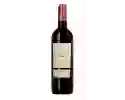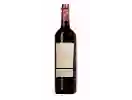
Château EugénieCuvée L'Imperatice Cahors
This wine is a blend of 2 varietals which are the Malbec and the Tannat.
This wine generally goes well with poultry, beef or mature and hard cheese.
Food and wine pairings with Cuvée L'Imperatice Cahors
Pairings that work perfectly with Cuvée L'Imperatice Cahors
Original food and wine pairings with Cuvée L'Imperatice Cahors
The Cuvée L'Imperatice Cahors of Château Eugénie matches generally quite well with dishes of beef, spicy food or mature and hard cheese such as recipes of beer goulash, makrouna salsa (tunisian pastry) or county doormat.
Details and technical informations about Château Eugénie's Cuvée L'Imperatice Cahors.
Discover the grape variety: Malbec
Malbec, a high-yielding red grape variety, produces tannic and colourful wines. It is produced in different wine-growing regions and changes its name according to the grape variety. Called Auxerrois in Cahors, Malbec in Bordeaux, it is also known as Côt. 6,000 hectares of the Malbec grape are grown in France (in decline since the 1950s). Malbec is also very successful in Argentina. The country has become the world's leading producer of Malbec and offers wines with great potential.
Informations about the Château Eugénie
The Château Eugénie is one of of the world's greatest estates. It offers 23 wines for sale in the of South West to come and discover on site or to buy online.
The wine region of South West
The South-West is a large territorial area of France, comprising the administrative regions of Aquitaine, Limousin and Midi-Pyrénées. However, as far as the French wine area is concerned, the South-West region is a little less clear-cut, as it excludes Bordeaux - a wine region so productive that it is de facto an area in its own right. The wines of the South West have a Long and eventful history. The local rivers play a key role, as they were the main trade routes to bring wines from traditional regions such as Cahors, Bergerac, Buzet and Gaillac to their markets.
The word of the wine: Aging
Period during which a wine is kept in a cellar where it goes through different phases of evolution of its aromatic range and a maturation of its constituents (evolution of the colour, refining of the tannins, harmonization of the different flavours, etc.). The wine evolves better and less quickly in large containers, whereas it deteriorates prematurely in half-bottles.














